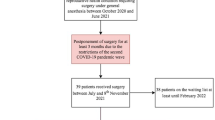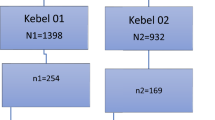Abstract
Unconsummated marriage (UM) is the failure to perform successful sexual intercourse at the beginning of the marriage. Vaginismus has been traditionally reported as the leading cause. ED is also a leading cause for UM. This appears to be a significant problem in the conservative middle-Eastern societies and in the developing countries, where couples are strongly prevented by religious rules and cultural taboos from sexual experiences before wedding. One could think that according to major sexual freedom and information, in Western countries UM is now disappearing, but the number of observed cases by the authors in 2008–2012 was relevant. The aim of this study is to compare the literature data from non-Western countries with the features of UM in Western ones, focusing on cases observed by the authors, and to verify whether the etiology of UM proposed in the ’70s is still relevant, outlining any changes that occur in current reality. In our series, traditional appearance of UM is no more effective, while the role of man is undervalued, because of his frailty, lack of self-confidence and ignorance, expressing a social and cultural change of man’s role in the couple.
This is a preview of subscription content, access via your institution
Access options
Subscribe to this journal
Receive 8 print issues and online access
$259.00 per year
only $32.38 per issue
Buy this article
- Purchase on Springer Link
- Instant access to full article PDF
Prices may be subject to local taxes which are calculated during checkout
Similar content being viewed by others
References
Faruk M . Honeymoon impotence: psychogenic or organic in origin? Urology 2001; 57: 758–762.
Shamloul R . Management of honeymoon impotence. J Sex Med 2006; 3: 361–366.
Badran W, Moamen N, Fahmy I, El-Karaksy A, Abdel-Nasser TM, Ghanem H . Etiological factors of unconsummated marriage. Int J Impot Res 2006; 18: 458–463.
El-Meliegy A . A retrospective study of 418 patients with honeymoon impotence in an andrology clinic in Jeddah, Saudi Arabia. Europ J Sexol 2004; 13: 1–4.
Yanaihara H, Marumo K, Murai M . Clinical study of honeymoon impotence at Keio University. Impotence 1998; 13: 201–204.
Ozdemir O, Simsek F, Ozkardes S, Incesu C, Karakoc B . The Uncosummated marriage: its frequency and clinical characteristics in a sexual dysfunction clinic. J Sex Marital Therapy 2008; 34: 268–279.
Zargooshi J . Male sexual dysfunction in unconsummated marriage: long-term outcome in 417 patients. J Sex Med 2008; 5: 2895–2903.
Kaplan HS . The New Sex Therapy. Brunner/Mazel: New York, NY, USA, 1974.
Ghanem H, El-Dakhly M, Shamloul R . Alternate-day tadalafil in the management of honeymoon impotence. J Sex Med 2008; 5: 1451–1454.
Crowe M, Jones M . Sex therapy: the successes, the failure, the future. Br J Hosp Med 1992; 48: 474–479.
Binik YM . The DSM diagnostic criteria for vaginismus. Arch Sex Behav 2010; 39: 278–291.
Fisher WA, Eardley I, McCabe M, Sand M . Erectile dysfunction (ED) is a shared sexual concern of couples II: association of female partner characteristics with male partner ED treatment seeking and phosphodiesterase type 5 inhibitor utilizations. J Sex Med 2009; 6: 3111–3124.
Conaglen JV, Conaglen HM . The effects of treating male hypogonadism on couples' sexual desire and function. J Sex Med 2009; 6: 456–463.
Lauman EO, Paik A, Rosen C . Sexual dysfunction in the United States. Prevalence and predictors. JAMA 1999; 281: 537–544.
Zargooshi J . Unconsummated marriage: clarification of aetiology; treatment with intracorporeal injection. BJU Int 2000; 86: 75–79.
Masters WH, Johnson VE . Human Sexuality Inadequacy. Little Brown: Boston, MA, USA, 1970.
Gindin LR, Resnicoff D . Uncosummated marriages: a separate and different clinical entity. J Sex Marital Therapy 2002; 28: 85–99.
Organization for Economic Co-operation and Development. http://www.oecd.org/edu/EAG2012%20-%20Countary%20note%20-%20Italy.pdf.
Gül V, Ruf GD . Treating vaginismus in Turkish women. Nervenarzt 2009; 80: 288–294.
Ribner DS, Rosenbaum TY . Evaluation and treatment of unconsummated marriages among Orthodox Jewish couples. J Sex Marital Ther 2005; 31: 341–353.
Perelman MA . Sex coaching for physicians: combination treatment for patient and partner. Int J Impot Res 2003; 15: S67–S74.
Dean J, Rubio-Aurioles E, McCabe M, Eardley I, Speakman M, Buvart J et al. Integrating partners into erectile dysfunction treatment: improving the sexual experience for the couple. Int J Clin Pract 2008; 62: 127–133.
Author information
Authors and Affiliations
Corresponding author
Ethics declarations
Competing interests
The authors declare no conflict of interest.
Rights and permissions
About this article
Cite this article
Michetti, P., Silvaggi, M., Fabrizi, A. et al. Unconsummated marriage: can it still be considered a consequence of vaginismus?. Int J Impot Res 26, 28–30 (2014). https://doi.org/10.1038/ijir.2013.24
Received:
Revised:
Accepted:
Published:
Issue Date:
DOI: https://doi.org/10.1038/ijir.2013.24
Keywords
This article is cited by
-
SIAMS survey on sexological screening during the assisted reproductive technologies in Italy
Journal of Endocrinological Investigation (2015)
-
“Throwing the Baby Out with the Bathwater”: The Demise of Vaginismus in Favor of Genito-Pelvic Pain/Penetration Disorder
Archives of Sexual Behavior (2014)



